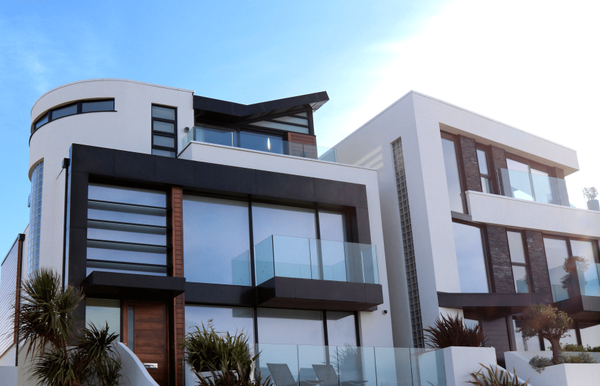Swimming Pools 101 – Types/Materials

If you read our last article, you know a swimming pool can add home value. Did you know, 92% of people with swimming pools installed reported a greater desire to stay at home once completed? In addition, roughly 80% of Florida homes feature a pool. With numbers like those, we thought it important to get some basic swimming pool information out there.
Types of Swimming Pools
While the most common pool is a concrete pool, there are actually a number of ways to build a swimming pool. Choosing between the style of pool, the material of the pool itself, and whether you want to use a salt or chlorine system, make a pool project a rather large endeavor.
Inground Pools
Fiberglass Pools: Built off site and delivered to your home, the surface has a gel coat, making the surface virtually non-porous. This means a fiberglass pool will not have the same water chemistry/ algae growth issues a concrete pool has. When compared to a concrete pool, you will spend roughly 75% less time and money on a fiberglass pool, according to River Pools and Spa. These pools are incredibly durable, lasting 30 years without resurfacing. They are also easy to maintain and are compatible with salt systems. Not to mention the speedy installation, taking just weeks to install versus the months a concrete pool will take to construct.
The biggest downside to fiberglass pools is they are not customizable in size and shape. So while getting a kidney shaped fiberglass pool or a 10 foot depth is not possible, the pool itself can feature customized colored finishes, ceramic tile, tanning ledges, water features, water lights, and more.
Concrete (or Gunite) Pools: The most common type of pool because concrete pools are customizable in size and shape. They also have the highest initial cost as well as the highest cost of ownership of all the types we will discuss. This actually makes concrete pools the most expensive and the most desired. Made with concrete pools and reinforced with steel, they are incredibly durable. However, the concrete is porous, and algae sticks/ imbeds easily in it. This translates to more chemical costs as well as more time simply cleaning the pool. Paying for a pool cleaning service is usually recommended for these types of pools. They will not only keep the pool clean but also make sure the water chemistry stays balanced. While you can use a salt system with a concrete pool, the salt could erode the concrete making maintenance more expensive.
Concrete pools have the highest cost of ownership of all pool types mentioned. They require an acid wash every 3 to 5 years and refinished every 10 to 15 years. This, in addition to chemical/service cost, and an estimate higher usage of electricity.
Vinyl Pools: The vinyl lined pool has the lowest initial cost for an inground pool. It is completely customizable in size and shape, which allows for your creativity to shine. The liner is non-porous, making it easy to keep clean and the water balanced. However, there are areas, behind lights for example, where the water does not circulate and algae can grow. The liners themselves need replaced every 5 to 9 years, making this type of pool more difficult to maintain than a fiberglass pool but less than a concrete one. Vinyl pools are compatible with salt systems however, make sure the side walls are plastic, not metal. The water/salt will erode when the liner leaks, which it will do.

Above Ground Pools
The most economical option for the pool owner is the above ground pool. Above ground pools, as they state, sit above ground in your yard. Sometimes they feature a deck or patio around the pool. The construction of these pools include aluminum, steel, or resin, and vinyl liners. Sometimes referenced as a DIY pool, it can be purchased at the local pool store and constructed at home. One of it greatest appeals is that it can be disassembled and taken if you move. While the pool can last between 10-20 years, the liner will need to be replaced every 5 years. Above ground pools can also be made into semi inground pools, partially burying the pool bridging the gap between the top of the pool and the ground. These pools are also compatible with salt systems, just remember to be diligent with leaks if your framework is metal.
Stay Tuned
Choosing the best option for you may take some research. As you get into deck and patio options, the project becomes even larger. However, there is no shortage of companies to interview to help determine the best option for your future plans. We always recommend calling at least 3 companies, no matter the service provided.
Stay tuned for our next article explaining specialty pools and the difference between a salt and chlorine system!

Sources:
The post Swimming Pools 101 – Types/Materials appeared first on JNJ Dream Team.
Categories
Recent Posts










